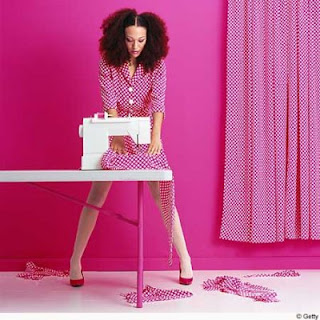Sunday, November 25, 2012
T-Shirt Quilt How-to
Do you have an abundance of old t-shirts laying around? I know we do in my house. They all seem to have some kind of connection to past memories; maybe of a vacation, an old school, a marathon you participated in. If you're like me, you find it hard to just throw them out and end up having a bunch of old shirts that don't get worn and just take up space. Well, I have found the perfect solution. I am currently working on my first t-shirt quilt. After researching online, I found plenty of sites instructing you how to make your own quilt. You can find a pattern here. First, you will need to make a list of the supplies you'll need and get to shopping! Here is a list of what you'll need, which can be found at your local Walmart or Hobby Lobby stores.
1. Fusible interfacing- Each shirt must be backed with non-woven fusible interfacing to prevent it from stretching. Buy enough fusible interfacing to make a 17" square for each T-shirt. Select good quality, light weight interfacing. Fusible interfacing needs to be non-woven, glued only on one side. Featherweight fusible interfacing works best for t-shirt quilts. It doesn't add weight and doesn't make the quilt stiff. Either Bosal 312 or Pellon 906F are good choices.
2. Fabric-Fabric for Sashing/Border/Binding. Sashing strips form a decorative grid between each T-shirt block. Plan on 2" sashing strips (1 1/2" when finished) between the blocks, 2 1/2" strips (2" when finished) for the border, and additional fabric for the binding. Calculate the amount needed and be sure to wash it before you use it - you want to be sure that the color won’t run and that the fabric will not shrink after the quilt is finished.
3. Fabric scissors-For cutting the shirts and fabric.
Once you have all of your supplies, you'll need to start cutting your t-shirts and getting them ready. Separate the front of the shirt from the back. Make sure the shirt is smooth, iron it if necessary. You want your shirt size to be larger than 15 inches square, ideally larger than 17 inches to fit the interfacing. After you apply the interfacing you will cut the shirt square to the desired size. Next, you'll need to apply the interfacing. Cut interfacing into 17" squares, one for each shirt. Don’t piece the interfacing, it will show through. Position the interfacing with the resin side down on the wrong side of the t-shirt, trying to center the design as much as possible. Follow the manufacturer’s instructions for fusing to the back of each T-shirt. Use a press cloth so you don’t get any glue on your iron. Beware of wrinkles - once cool they won’t come out! Now that your interfacing is applied you will need to cut your squares to the desired size. Make sure you center the design and lettering, remember measure twice, cut once! Cut with scissors or rotary cutter. Once all of your shirts are cut into squares you will need to lay them out on the floor and arrange them as you will sew them. Alternate light/dark, busy/not so busy. Make sure the blocks can be read from the desired direction. Now you;ll need to complete the quilt top and add sashing. Sashing strips are the horizontal and vertical strips between blocks. The horizontal strips should measure 15" in length (for a 15" square) x 2" wide. Cut enough sashing strips to add to all the t-shirts except the bottom row. Then sew horizontal strips to the bottom of each block, except the blocks in the bottom row. Sew blocks together to form columns.After all the blocks are sewn into columns, make long 2" sashing strips slightly longer than length of each column. Sew the 2" sashing strips onto the inside edge of the completed columns, one strip to each column (don't sew a sashing strip to the outside edges of the columns) and sew the columns together. Cut off excess fabric. Press toward sashing. Cut border strips 2 1/2" wide and add as desired. If you need to do a final pressing, make sure you put a cloth over the shirts as the designs may smear if the iron is placed directly onto them. Finally, finish by layering backing batting and quilt top. Baste or safety pin together. If you have some experience machine quilting you can quilt your quilt or you can tie it to hold the layers together. Bind your quilt and be sure to add a label. Your finished product should look something like this.
Subscribe to:
Post Comments (Atom)

No comments:
Post a Comment